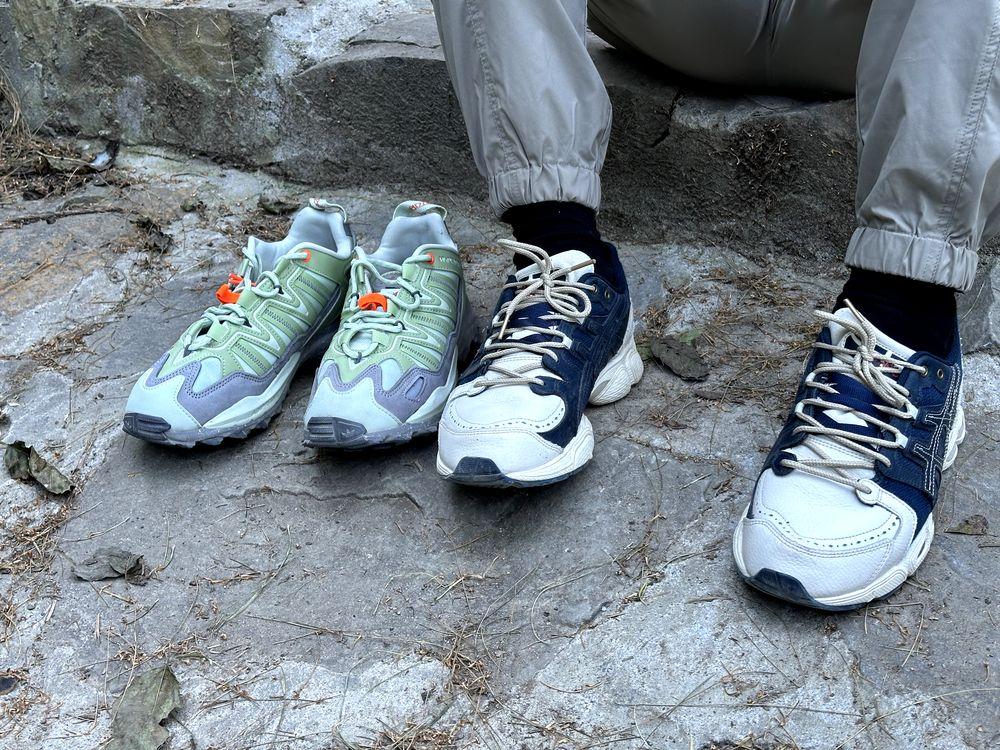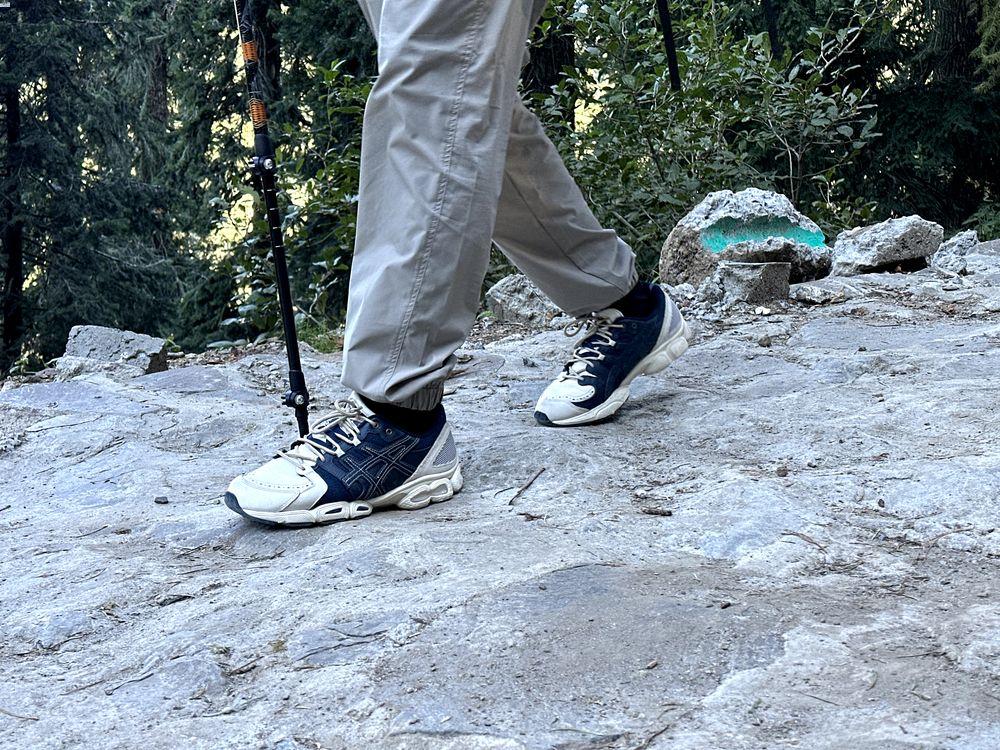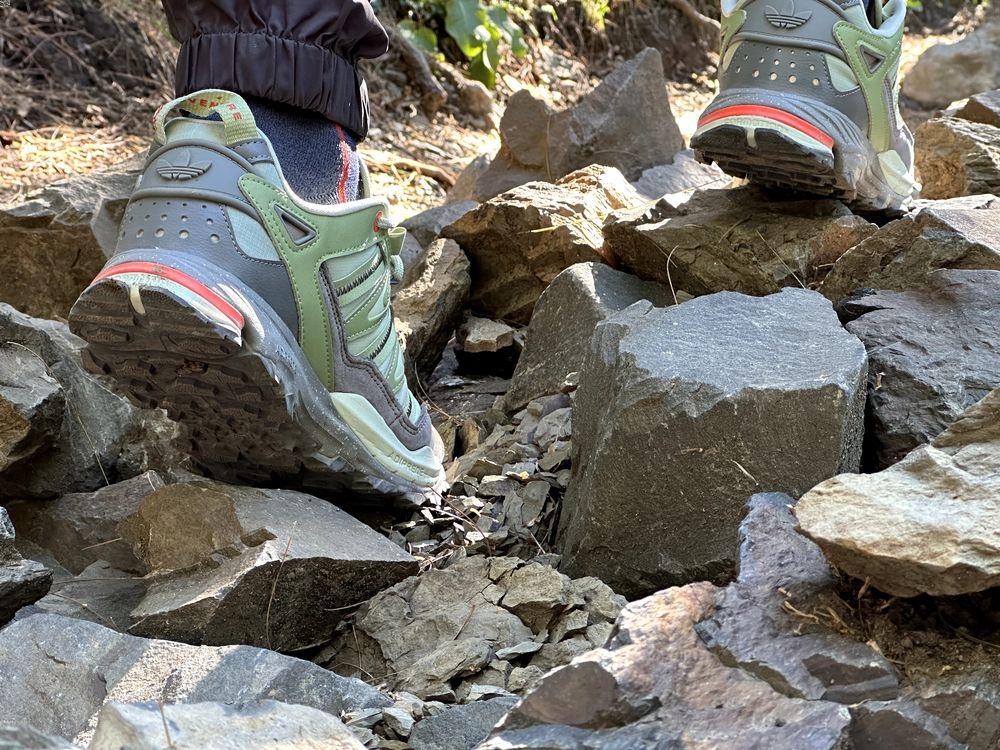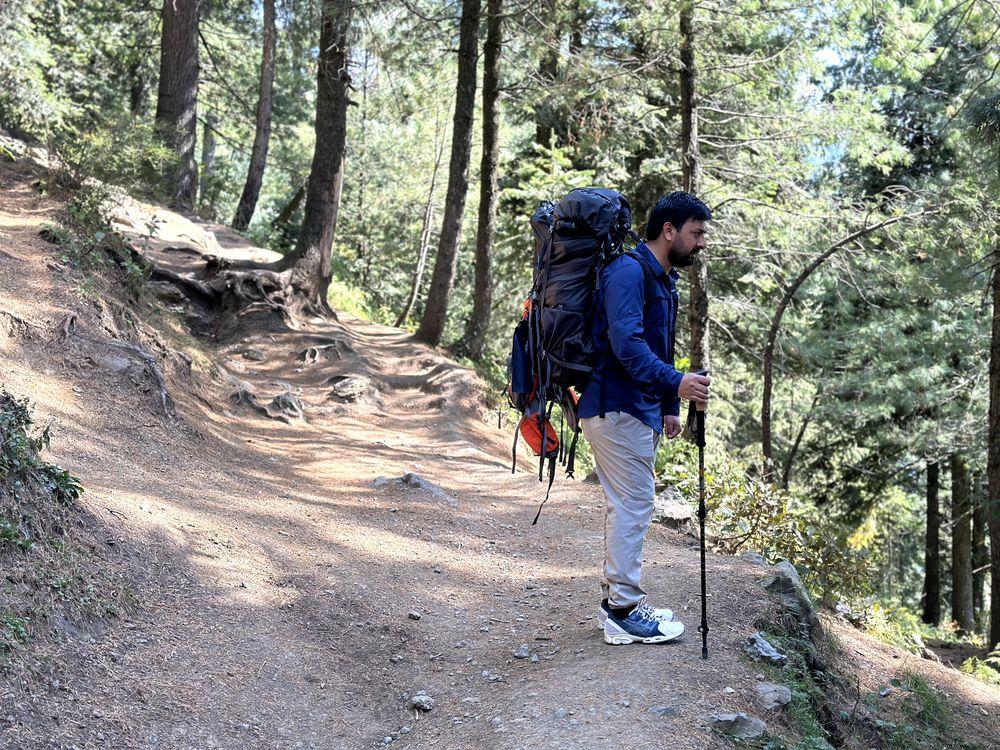I hiked and backpacked 1500 miles in the Himalayas with three pairs of shoes. Hiking boots, running shoes, and sandals. I wore each pair on different patches of the trail to experiment with each type of footwear. Trails range from well-maintained to rough and rugged hiking tracks.
I am well-versed in the opinions and recommendations of fellow hikers and industry experts about running shoes for hiking.
Feet takes most of the hammering on rugged, rough, and rocky trails. Not wearing comfortable shoes on the trail can lead to foot pain.
But the question is: Can you hike in your running shoes? Unfortunately, there is no “yes” or “no” answer, as you might have expected. There are pros and cons to wearing running shoes while hiking. The big problem is that, without experience, you won’t even know if running shoes are a suitable option.
Don’t worry if you don’t have hiking experience. Here are a few tips to help you decide whether to wear running shoes or hiking boots.
When You Can Wear Running Shoes For Hiking: Pro Tips
Experienced vs. New Hikers
If you are an experienced hiker, you are already familiar with your body fitness level, body weight, pack weight, trail types, and which shoes are better suited to you. If you are new to hiking, start with hiking boots for better stability and grip. As you gain more experience and confidence, you can gradually begin experimenting with running shoes.

Rockier trails can be challenging to navigate. But with time and expertise, your legs and feet will improve in finding stability, even with running shoes.
Most thru-hikers advocate and wear running shoes due to their experience on the trail, fitness level, and major easy-to-hike trail portions.
However, for newcomers, running shoes can pose serious stability issues. Ankle twisting and slipping, even on a simple train with little bumps, are common, and a lack of foot protection can backfire on your hiking journey. They are not a good choice for medium- to hard-hiking terrains due to their lack of stability and wide tread pattern.
Hiking downhill puts pressure, especially on the front part of the shoes. Running shoes’ upper mesh or upper shoe sole can easily rip and leave you stranded with no shoes on the trail.
They lack durability and wear out quickly on rocky terrain, so you will have to change them often. They lack toe protection, so you need to be extra cautious on rough terrain.
Weight
You need better stability and ankle support if you are overweight or carry bulkier backpacks. So, hiking boots serve the purpose better with extra cushioning and ankle support, along with a dense tread pattern.
Hiking boots offer support to save your feet from fatigue. More weight puts more pressure on your feet.
Running shoes are usually designed with less weight and cushioning, which don’t absorb the shock and pressure like bulkier boots with better cushioning. Your feet will tire even after a short hike, and you won’t be able to move forward due to foot pain that arises while continuously hammering your feet on the rugged and rocky ground.
If you are not overweight or carrying bulkier backpacks, trail running shoes, as long as you are aware of the trail, are a good option with their lightweight build and reasonable tread pattern.
Some popular hiking boots include Salomon X Ultra 4 Mid Gore-tex and Merrell Men’s Moab 3, while well-known trail running shoes are Salomon Speedcross 5 and HOKA Speedgoat 5.
Trail Types
Understanding the hiking terrain is important if you want to opt for running shoes instead of hiking boots. Well-maintained tracks are usually easy to walk and hike, and your simple running shoes offer plenty of support for hiking on these trails.

However, be mindful of rain if the trail has pure soil patches, as it gets slippery, which requires boots with a better grip for a safe hike. Rugged terrain demands proper boots that provide great grip and stability. So, hiking on such patches with your running shoes is risky.
Pros and Cons of Running Shoes For Hiking

Advice on Choosing and Hiking in Running Shoes
Trail Runners Over Regular Running Shoes
Hiking in running shoes, especially on non-technical terrain, certainly provides benefits, considering that you know the trail, have some hiking experience, and choose the right running shoes wisely. Not all running shoes are suitable for hiking, so you must be extra cautious when selecting the right pair to protect your feet on the trail.
Go with a nice pair of trail runners rather than regular running shoes. Regular running shoes are specially designed to run on a nice pavement track in an urban environment. However, trail runners, on the other hand, provide a deep tread pattern, providing better stability and grip on the trail.

However, if you are new to hiking, try the trail runners and hiking boots to determine which suits you better. The top advantage of trail runners is their lightweight and comfort, and many modern hiking boots (like) also cut on weight and provide better comfort, along with better footwear for technical and rugged terrains.
Personal Preference
Your unique hiking experience, physical fitness level, health condition, and weight, including your backpack weight, all play a significant role in choosing the right footwear.
It’s not just about what the experts say or what the majority prefers. It’s about what feels best for you on the trail. Choose footwear that provides you with better comfort and confidence during your hike.
Try Out
Go to the outdoor gear shop. Take regular running shoes, trail runners, and hiking boots. Wear each pair and take a short walk inside the store.
This hands-on approach will give you a good sense of how each pair feels on your feet. It’s like a test drive for your feet. This won’t make you an expert in choosing the right footwear, but it will give you a pretty good idea of how you feel wearing each pair of shoes. And that’s a great start for your hiking journey.
Unlike hiking boots, which require a decent break-in period, running shoes provide comfort right out of the box. Their lightweight and breathable features prevent foot fatigue, with adequate airflow to keep the feet comfortable and dry during hot weather.
Thro-hikers choose trail runners to cover long distances at a quick pace as their lightweight design doesn’t weigh you down or put your feet under stress. The fact that thru-hiker also covers most of the trail, which is not tough or heavy on shoes.
Hiking boots typically need a few weeks of regular use to conform to your feet, preventing blisters and discomfort on longer hikes. This makes hikers believe they are better suited for hiking.
Related: Can You Wear Sandals In Hiking?
Summary: Can You Wear Running Shoes For Hiking?
Trail running shoes are an excellent choice for hiking due to their lightweight and breathable features. They also provide a decent level of traction to easily hike on a simple to medium difficulty level of hiking.
Choose them carefully by considering the kind of tread pattern, their durability (yes, trails demand durable shoes), and the type of trail where you take them for the hike. They don’t offer better stability and support on technical terrain like hiking boots. So, a better option is opting for a hiking boot for extra traction, ankle support, and stability. If you are new to hiking, try hiking boots and then gradually move toward the trail, running, as you will get a better understanding and control of your strides in the mountain.
In addition, the more you hike, the better it becomes for you to narrow down on the right footwear that provides ample support and comfort on the trail. Remember that one rule does not fit all due to the differences in experience level, physical fitness, foot shape (flat or flat), and ability to adapt.
